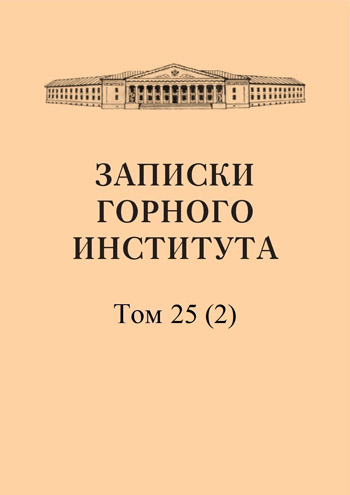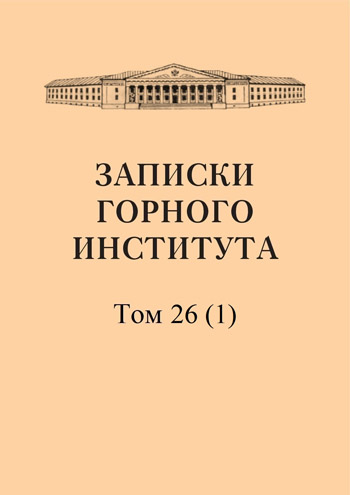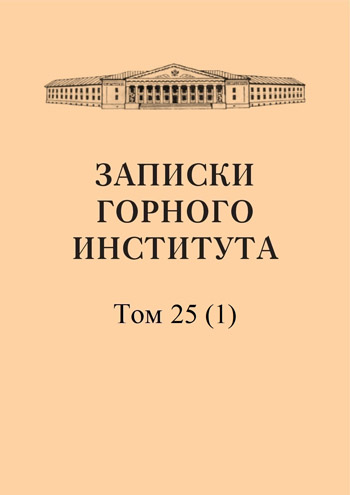-
Date submitted1950-08-01
-
Date accepted1950-10-28
-
Date published1951-08-08
About engineering geology and some questions from its history
- Authors:
- V. D. Lomtadze
The Central Committee of our party and Comrade Stalin personally have always paid and continue to pay great attention to the ideological training and education of personnel. This work is acquiring enormous importance now, when our country is going through a significant period of transition from socialism to communism. In accordance with the resolution of the Central Committee of the All-Union Communist Party (Bolsheviks) on the journals "Zvezda" and "Leningrad", Soviet scientists were given the task of reviewing the development paths of individual branches of science, intensifying the fight against anti-scientific trends, the worship of foreign science and technology, and restoring the priority of Russian science. A sure means of combating the shortcomings of any work is criticism and self-criticism. "It is generally recognized," Comrade Stalin points out, "that no science can develop and succeed without a struggle of opinions, without freedom of criticism." This instruction from Comrade Stalin is of particular importance for engineering geology, the youngest of the geological disciplines, the history of whose development spans only two decades. Naturally, many provisions in engineering geology have not yet been sufficiently developed and formulated, and some are completely incorrect and erroneous. The present article is devoted to a critical examination of some of these provisions.
-
Date submitted1950-08-04
-
Date accepted1950-10-19
-
Date published1951-08-08
Coal-bearing strata and methods of its study
- Authors:
- Ya. A. Zhemchuzhnikov
At present, it can already be considered sufficiently clear that coal-bearing strata represent unique geological polyfacial formations, appearing in the history of the earth under certain conditions. In a number of characteristic features, they differ sharply from other equally typical formations, for example, flysch, molasse, salt-bearing, etc. However, the conditions of formation, as well as the very nature of coal-bearing deposits, do not remain constant for all geological periods, but, on the contrary, reveal changes and development. This development for large segments of geological history reveals its progressive nature, although it experiences periodic fluctuations and deviations, reflecting in this sense the general course of development of the earth. The present work sets as its task, by analyzing a wide range of material, to reveal the features of coal-bearing sediments, as a certain type of deposits, and to illuminate the patterns of their accumulation; and on the basis of the latter, to outline specific methods of study, arising precisely from their characteristic features, not inherent in many other complexes of deposits.
-
Date submitted1950-08-15
-
Date accepted1950-10-13
-
Date published1951-08-08
Conditions for squeezing water and oil from clays
- Authors:
- V. D. Lomtadze
Studying the conditions of squeezing water and oil from clays is of exceptional importance for understanding the genesis of oil, oil fields, the formation of the salt composition of groundwater and the properties of clay sediments. Squeezing water and oil from clays is associated with the issue of clay compactibility. Clay compactibility has been studied many times, and there is extensive literature devoted to this issue. However, all these studies, in most cases, were conducted for engineering and construction purposes. Therefore, clay compaction was studied, as a rule, under low loads (4-6 kg/cm2). In addition, these studies were usually carried out to obtain the physical and mechanical characteristics of the soil. Only a few works are devoted to studying clay compactibility under higher loads.
-
Date submitted1950-08-02
-
Date accepted1950-10-05
-
Date published1951-08-08
Some data clarifying the coefficient of variation
- Authors:
- N. V. Ivanov
The article sets the task of specifying the variation coefficient reflecting the distribution of a useful component in an ore deposit. The variation coefficient is a value characterizing the dispersion of the distribution of the material composition in the ore body of a particular deposit. As is known, attempts to use the variation coefficient to solve applied problems (for example, choosing the distances between samples and workings during sampling and exploration of deposits) were not very successful. The density of various workings and samples in this case significantly exceeded the accepted and justified practice. The unsuccessful use of the variation coefficient in solving the above problems is partly explained by the presence of a pattern in the spatial distribution of the material composition in the ore bodies of deposits, which is in conflict with the basic provisions of variation statistics. In addition, the determination of the value of the variation coefficient itself is inaccurate for two reasons: 1) incorrect use of factual material reflecting the nature of the mineral; 2) the influence of sampling error on the value of the coefficient of variation.
-
Date submitted1950-08-24
-
Date accepted1950-10-14
-
Date published1951-08-08
Materials for the qualitative characteristics of coal in the Nelidovsky district
- Authors:
- I. G. Kuprov
The properties of coal in the Nelidovsky district are generally characterized in exploration reports based on the results of petrographic and chemical analyses of core samples. The exploration materials indicate that humus coal varieties (duren, clarene-duren and claren) are predominantly common in the Nelidovsky district, while humus-sapropel varieties are less common. The analyses provided in the same materials show a clearly expressed inconstancy of the chemical composition of coal. Thus, its technical composition is characterized by the following data: hygroscopic humidity from 2.85 to 33.74%; ash content of dry coal from 28.41 to 46.63%; volatile yield on a dry basis from 21.21 to 33.03%; total sulfur from 1.16 to 2.30%. The elemental composition of the organic matter is as follows: carbon from 68.05 dog 75.42%; hydrogen from 4.42 to 5.70%; nitrogen from 0.33 to 1.30% and oxygen in total with sulfur from 20.93 to 26.33%. The yield of dry distillation products: moisture from 3.90 to 15.60%; resins from 3.50 to 9.00%; semi-coke from 63.26 to 83.60%; gas and losses from 6.80 to 12.20%. The calorific value of dry coal fluctuates within 3470-5269 calories. Obviously, the main reason for the inconsistency of chemical properties is the petrographic heterogeneity of coal. Therefore, to resolve the issue of the most rational use of coal in this newly developed region, it is important to know what role each of the petrographic types plays in the formation of the layers and their properties.
-
Date submitted1950-08-26
-
Date accepted1950-10-28
-
Date published1951-08-08
Methodology for the production of film monoliths
- Authors:
- V. N. Novozhilov
The article presents a method for making film monoliths, which we used in 1950 when studying the soil and ground conditions of the stadium sites of the DSO "Medic", named after V. I. Lenin in Leningrad and the City Stadium in Vyborg. We based the proposed method on some experience in making film monoliths by Professor K. Orvik and personal results of selecting monoliths at the indicated sites. The value of film monoliths for geologists and engineering geologists involved in studying the soil and ground conditions of construction sites, stadiums, etc. is obvious. Film monoliths can be of no less importance in geological mapping of Quaternary deposits represented by sandy, clayey and sandy loam rocks. It is known that when documenting sedimentary rocks with a loose structure, there is a desire to "reinforce" the sketch and description of the outcrop with samples with the most characteristic textural and structural features of these rocks, while preserving the sequence of stratification and the diversity of their color. Meanwhile, obtaining samples of loose rocks from deposits of cross-bedded sands, varved clays and lacustrine-marsh deposits is very difficult.


